The Apple iPhone 11, 11 Pro & 11 Pro Max Review: Performance, Battery, & Camera Elevated
by Andrei Frumusanu on October 16, 2019 8:30 AM ESTCamera - Daylight Evaluation: Triple Cameras
Thus far we’ve covered the iPhone 11 series' new A13 SoC, the new display and the phones' excellent battery life. But it’s very evident that above all that, Apple puts the new cameras at the forefront of the new device generation.
The new main camera on the iPhone 11s employ a new generation sensor with full dual-pixel phase-detection autofocus (PDAF) coverage. While the pixels themselves remain the same at 1.4µm in width, Apple will have likely improved the deep trench isolation (DTI) implementation, allowing for the sensor to achieve better detail and less noise.
The wide-angle camera will be the most interesting aspect of the new cameras: the 120° field-of-view of the new module will allow for a completely new perspective on photography for iPhone users, and should be a big new addition to the shooting experience of the phones.
As a note, I had started off the daylight comparison photos on the initial iOS13.0 launch version. By the time I got to the night time shots iOS13.1 was released so those photos were captured on that version. Finally, I added a quick comparison with the newest iOS13.2 and the new Deep Fusion feature towards the end of the daylight pages.
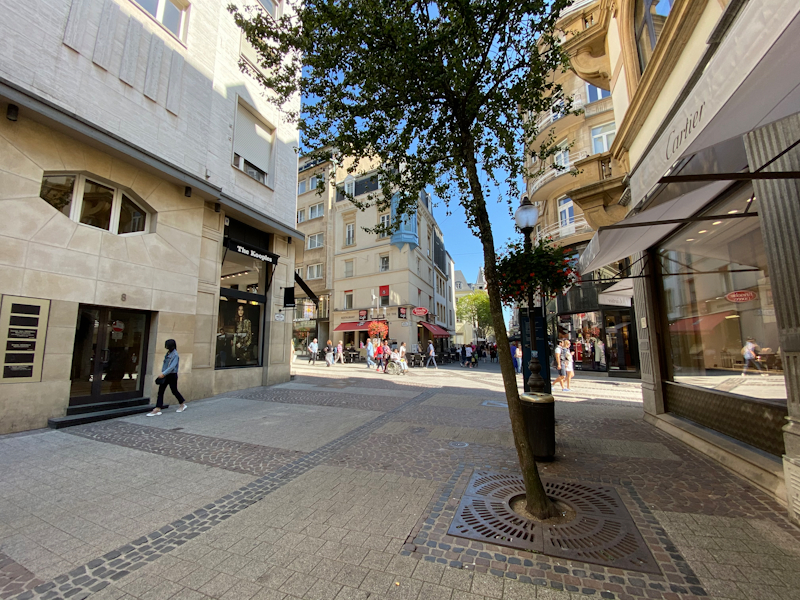
[ iPhone 11Pro ] - [ iPhone XS ] - [ iPhone X ]
[ S10+(S) ] - [ S10+(E) ] - [ Pixel 3 ]
[ P30 Pro ] - [ Xperia 1 ] - [ G8 ]
Starting off with the main camera, we’re seeing a relatively similar exposure between the XS and the 11 in this shot. I feel like the 11’s color reproduction has improved slightly. Another big difference is in the HDR handling as the sunlit areas in the street as well as the top of the building are significantly better defined on the new 11. Detail-wise I can’t say there’s been too much of a change between the two phones in this shot.
On the telephoto camera, which is only available on the Pro models, we’re seeing a slightly brighter picture on the 11. It looks like the 11 has increased noise on the textures here, and we’re seeing a bit less detail in the details further back in the scene.
The wide-angle is a fantastic new addition to the 11 series as it’s able to capture a lot more of the scene in front of you. Apple does very well in terms of maintaining a good consistency between the different cameras and thus exposure and colors are extremely similar.
Comparing the quality of the wide-angle shots to that of other phones however we see that the dynamic range is a bit lacking, and the camera is having trouble in terms of defining the foreground shadows of the trees and the flowers on the lamp-post. The module does well with textures, but is a bit lacking in finer detail.
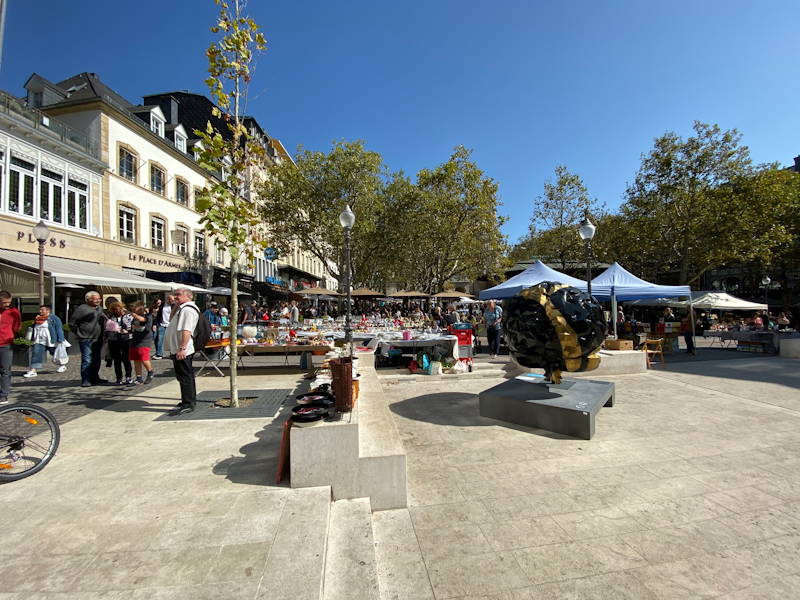
[ iPhone 11 Pro ] - [ iPhone XS ] - [ iPhone X ]
[ S10+(S) ] - [ S10+(E) ] - [ Pixel 3 ]
[ P30 Pro ] - [ Xperia 1 ] - [ G8 ]
In the next shot again, we see very similar exposures between the XS and the new 11. A definitive win for the 11 is the more accurate color temperature, as the XS had the tendency of being a bit warm. It’s very hard to make out any major differences in detail between the phones, but I do notice that the 11 has somewhat less detail in the texture of the ground.
On the zoom lens there’s very little difference again between the phones, however I feel that the 11 has less detail here and it’s as if it’s applying a sharpening filter. The trees particularly look more in focus on the XS – this might be a side-effect of the wider f/2.0 aperture lens on the new 11 module.
The wide-angle here makes it more visible that the color temperature is still a bit warm, as the concrete and stone had a greyer look to them in reality, something more similar to what the S10s are able to produce.

[ iPhone 11 Pro ] - [ iPhone XS ] - [ iPhone X ]
[ S10+(S) ] - [ S10+(E) ] - [ Pixel 3 ]
[ P30 Pro ] - [ Xperia 1 ] - [ G8 ]
On the main camera the improvements on of the HDR can be noticed again here as the 11 is better able to handle the highlights such as the leaves of the trees as well as the white tent – accurately depicting its details while the XS was clipping to white. There’s very little other difference in the details between the shots.
On the telephoto camera, here we’re definitely seeing some much increased noise on the iPhone 11 Pro's module compared to what the XS was able to deliver.
In terms of the wide-angle, I think it’s a matter of preference which phone you like most. What’s important for the iPhone 11 is that the composition between a crop of the wide-angle and the regular main camera looks almost identical and that’s a much appreciated degree of consistency.

[ iPhone 11 Pro ] - [ iPhone XS ] - [ iPhone X ]
[ S10+(S) ] - [ S10+(E) ] - [ Pixel 3 ]
[ P30 Pro ] - [ Xperia 1 ] - [ G8 ]
In this shot the statue in direct sunlight, we see the iPhone 11 Pro is able to resolve more details and remain sharper compared to the XS. This time around, we can also say the same about the telephoto module as the new unit is able to clearly outperform its predecessor.
On the wide-angle, while the iPhone 11 Pro did very well in composition, when we compare the details of the ground against the S10s, we see that it appears very washed out and blurry.
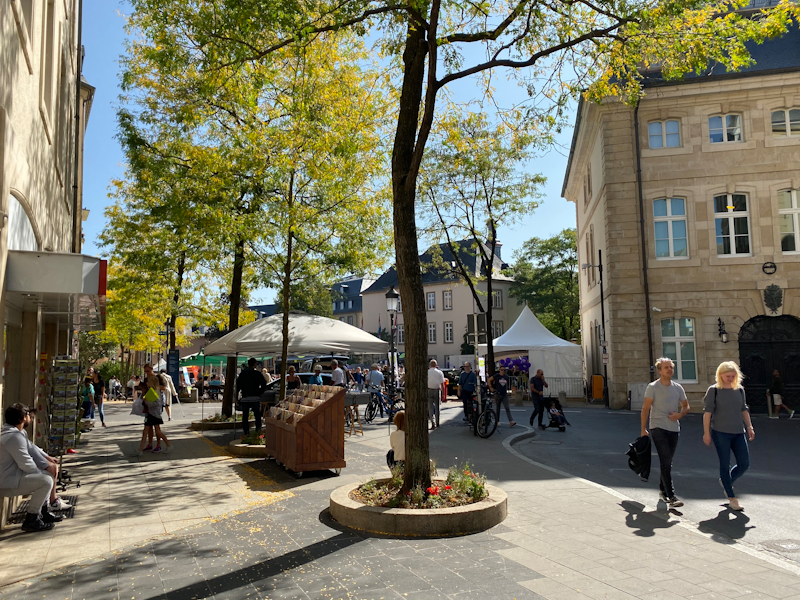
[ iPhone 11 Pro ] - [ iPhone XS ] - [ iPhone X ]
[ S10+(S) ] - [ S10+(E) ] - [ Pixel 3 ]
[ P30 Pro ] - [ Xperia 1 ] - [ G8 ]
In this shot you’d have an extremely hard time telling the iPhone 11 Pro and the iPhone XS apart. The 11 is able to render the tree leaves a little bit livelier, and I can see just a little bit less detail in the pavements, but other than that the shots are almost identical.
The telephoto here again seems to be as finely defined as on the XS – again not sure if this is due to optics or due to processing.
The wide-angle shot is excellent and I think a lot more natural than the Galaxy phones, really only falling second to the P30 Pro’s wide angle unit.
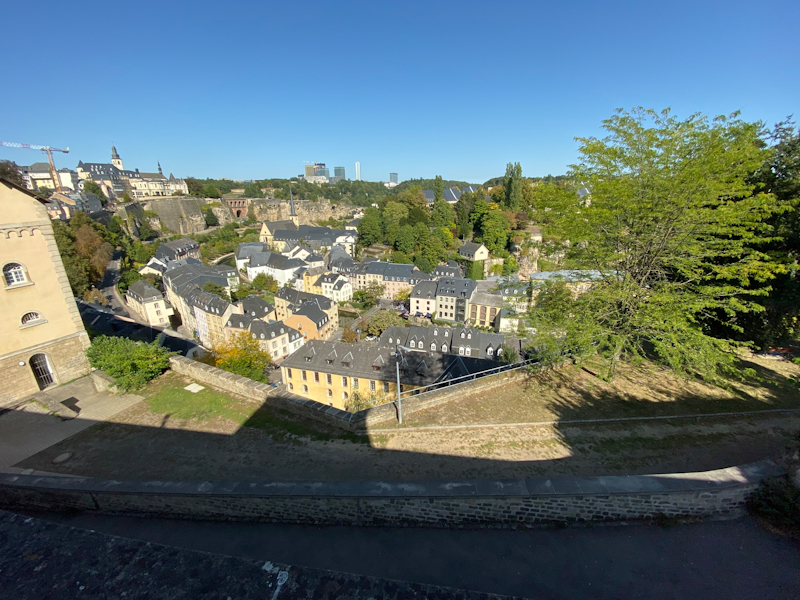
[ iPhone 11 Pro ] - [ iPhone XS ] - [ iPhone X ]
[ S10+(S) ] - [ S10+(E) ] - [ Pixel 3 ]
[ P30 Pro ] - [ Xperia 1 ] - [ G8 ]
The iPhone 11 Pro is able to better extract the saturation of the sunlit foliage in this shot and I think it looks a lot livelier than the XS. Detail between the two generations are even.
In the telephoto modules we see the same saturation change for the better, and this is one instance where the 11 does better in terms of detail as it’s able to have better definition of the roof tiles.
Apple’s wide-angle here is the most natural, even though it’s lacking Samsung’s much wider dynamic range – the latter here went a bit wacko in terms of the luminosity/saturation processing.
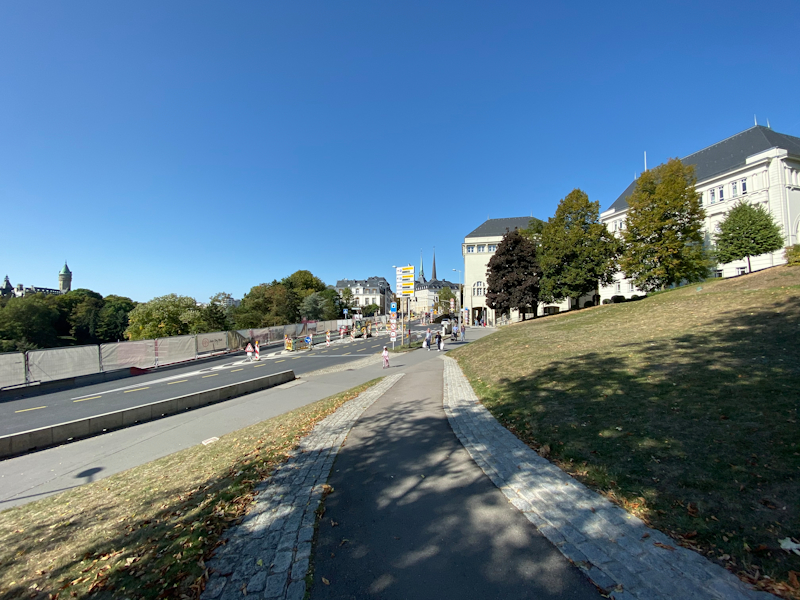
[ iPhone 11 Pro ] - [ iPhone XS ] - [ iPhone X ]
[ S10+(S) ] - [ S10+(E) ] - [ Pixel 3 ]
[ P30 Pro ] - [ Xperia 1 ] - [ G8 ]
Apple’s main improvements here again are color balance and better HDR retaining more details in the highlights of the sun-lit parts.
The telephoto keeps flip-flopping between being an improvement and being a degradation. Here the 11 has again more noise in it and appears less sharp than the XS. Also notice the reds of the traffic signs is a lot more muted on the 11, something also present on the main camera.
Composition of the wide-angle is good although it’s lacking in dynamic range compared to the S10. It’s also noticeably lacking in detail.

[ iPhone 11 Pro ] - [ iPhone XS ] - [ iPhone X ]
[ S10+(S) ] - [ S10+(E) ] - [ Pixel 3 ]
[ P30 Pro ] - [ Xperia 1 ] - [ G8 ]
In the next scene we’re seeing quite a large difference between the 11 Pro and the XS: The 11 is quite a lot brighter but at the same time the sky is also a lot more blown out. The brighter picture does end up more representative of the scene at the time.
On the telephoto the 11 Pro has more contrast, but it’s again noisier. The foreground parts we can see a bit of blur caused by the camera’s shallower depth of field due to the larger aperture.
The wide-angle did very well in terms of exposure here as some phones tended to be too dark.


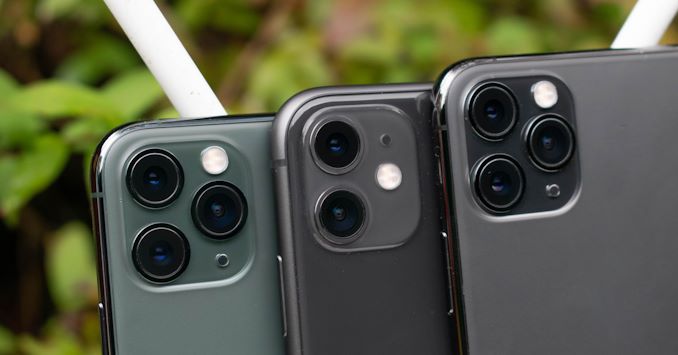








242 Comments
View All Comments
ksec - Wednesday, October 16, 2019 - link
Well At least one article got it right on Anandtech. Last time Anton refers Apple A13 as 7nm EUV, along with an TSMC update mentioning it as well. Now we can finally settle Apple is using N7P.I think one of the reason for the higher power usage is the A13 was designed with 7nm EUV in mind, and was only later changed to N7P as 7nm EUV may not provide enough capacity for Apple.
I do wonder if we are going to see 5nm Apple SoC next year.
Ian Cutress - Wednesday, October 16, 2019 - link
Anton didn't realise 'N7P' and 'N7+ with EUV' were different processes - and that people were using P instead of + for some unknown reason. Up until a while ago, any time someone said 'second generation N7', it was always thought of as N7+. Now we're making them clarify.FreckledTrout - Wednesday, October 16, 2019 - link
It's TSMC's alphabet soup so who can blame him. They could make the node names a bit easier for people whom are not CPU process nerds.dennphill - Wednesday, October 16, 2019 - link
Apple! They just give you what THEY want to! Pretty disappointed in all their products. I finally gave in and got rid of my Goggle thinggie (worthless, really) and got a reconditioned iPhone 8+ a coouple of months ago. It is really (so here's my technical user review: "It's just...") OK. My wife, OTOH, has an SE - her second - and she really doesn't want anything bigger. EVER! (Listen to that, Apple!) Even the reported new 'tiny' 2020 5.4" iPhone is what she calls HUGE. Weekend project is replacing her iPhone 5 SE battery that's begun not to keep a charge.peevee - Wednesday, October 16, 2019 - link
Make your bets: will Apple switch to A13X in their MacBooks... Seems would be very prudent with an 8-core implementation.solipsism - Wednesday, October 16, 2019 - link
I have no doubt Apple will replace Intel with an ARM SoC, but I do not expect it to be beefed up A-series chip found in an iPhone. Just like all their in-house designed chips, I would expect it to be its own letter designation with considerably more memory bandwidth, access to PCIe, and other features that work well in a lower-end portables and desktops.Diogene7 - Wednesday, October 16, 2019 - link
I hope Apple intend to keep their future laptop ARM CPU low power enough to not require any active cooling : a fanless ARM mac laptop is well executed could have a lot of appeal to me !!!That the reason why at the moment, I am keeping an eye on Samsung Galaxy Book S / Microsoft Surface Pro X that are the 2 first fanless computers with ARM Qualcomm 8cx : if responsiveness is good enough (especially for web browsing, watching video, Microsoft office,...) then it would prove it is possible.
From there, I would be very happy that Apple do an always connected fanless Macbook Air with an ARM CPU, as otherwise I am considering buying a Qualcomm 8cx fanless laptop (if the reviews confirms that the performance are reasonable enough)
joms_us - Wednesday, October 16, 2019 - link
I like to have this as well, approx. 1 day battery able to do media consumption/productivity. At least the comparison so far is that it is better if not than Intel Core i5-8250UQuantumz0d - Thursday, October 17, 2019 - link
This mentality shift that Apple caused in consumers is the reason why Laptops got rolled over into thin anf light disposable garbage.All Intel BGA / AMD (both PGA and BGA) all have castrated TDP limits which forces throttling. And Apple shoved an 6C/8T into which they cant cool because they tried to cheat physics. And still after VRM fiasco they still put the 8C/16T into that anemic chassis people who are buying them deserve to be robbed off th e 60% drop in performance.
Dell shoved XPS with same i9 and it got rekted down. Surface ARM cannot run 64bit x86 code and iy can run the UWP garbage only.
Next the BGA hellhole that Apple dragged everyone into. First x86 macs had BGA processors. Seeing that Intel stopped PGA and started Ultrabook BS and killed off all MX and XM PGA from Haswell making BGA with cTDP mandatory and bins locked down. My Haswell CPU in Notebook maintains consistent 700 in CB R15. Not even 7700HQ does it when put in a TDP locked JUNK.
And next Soldered SSD in Macs paired with T2 chip. Anything goes bad Go to Apple. Battery soldered to Chassis. KB inherent design flaw. This stupid corporate only knows how to fleece and put junk and forced all companies passively into this thin and light garbage.
Forget PCIE NVME SSDs in RAID rhat chassis will melt and GPUs don't exist in Apple lala land because Muh AR ML Kit and all.
ARM cannot do Transcoding work. Period. And Image Processing like Autodesk won't run on garbage ARM GPUs need Nvidia chips with High BW GDDR6 or G5X. Apple cannot cool them in that chassis. They can't escape Physics. End of Story of this A series competing with x86 ISA and Intel/AMD.
Diogene7 - Thursday, October 17, 2019 - link
@joms_us : Yes, for applications compiled to work natively on ARM64, the performance of the app running a Windows computer with Qualcomm 8cx should be similar as the same x86-32bits app running on a Windows computer with Intel Core i5-8250U, but with the advantage of having much better battery life which is appealing to me as well :).Really looking forward to read reviews on Samsung Galaxy Book S and Microsoft Surface Pro X to see if they hold to the hype...